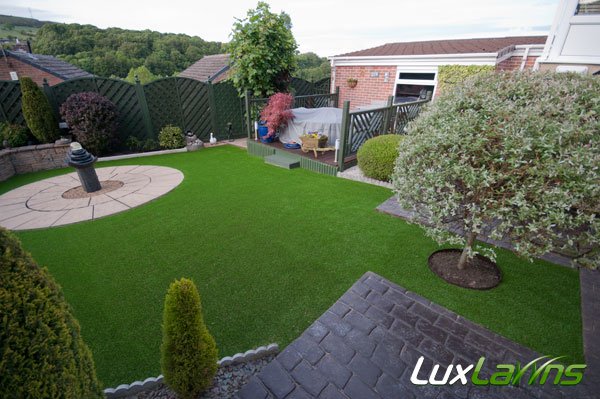Is Kiln-dried Sand Needed for Landscaping Non-infill Artificial Grass?

There are a lot of misconceptions regarding whether landscaping artificial grasses require a sand dressing, as they have a curled thatch layer, some will say this negates the need for kiln-dried sand but just because they are labelled non-infill products, meaning they don’t need to be infilled to the top like sports pitches, doesn’t necessarily mean no kiln-dried sand whatsoever.
Most grasses benefit from 5kg – 8kg per square metre depending on the pile height. Kiln-dried sand can often be called paving sand, silica sand or silver sand depending on the brand. There is also 2ew kiln-dried sand which is a technically graded sand which features less finer and more rounded grains for better drainage and longevity on sports pitches.
Whilst it’s not essential in all situations (roof terraces, indoors, specialty grasses, etc) for grasses with a curled thatch, as these are the products classed as non-infill (meaning they do not need to be filled to the top with sand or rubber crumb), it is still recommended by most manufacturers to add a kiln-dried sand dressing as it prolongs the life of the grass.
Most professional artificial grass installation companies, installing all year round, still sand dress for the long term benefits. Most DIY or landscapers, who do the odd job here and there, tend not to bother. You have to think would professional companies waste time and money doing an additional process if it wasn’t necessary.
Importantly, the sheer weight of the sand stabilises the entire system allowing the grass to complement the natural contours of your garden promoting a very natural appearance.
Pros
- Provides foundations at the base of the pile helping the grass to remain upright
- Helps to prevent damage to the backing from pets claws
- Removes static shock risk
- Reduces likelihood of theft
- Helps to keep grass cooler in hot spells
- Reduces fire risk
Most people who don’t recommend a sand dressing do so because it adds an extra step and cost to the installation.
That’s why you’ll hear some manufacturers or installers advising against using a sand infill – it allows them to offer a cheaper installation price, which might mean they are awarded the job over a competitor.
However, we believe the benefits far outweigh the negatives.
Cons
- adds additional costs to installation (more labour, specialist tools and extra materials)
- grass needs to be dry when applied (can’t be sanded during poor weather)
Myths Debunked
- Weed growth
Myth – A sand dressed grass is more prone to airborne pollination
The truth is pesky weeds can grow pretty much anywhere, so we recommend treating the lawn twice yearly with a weedkiller, we would still recommend this even if the grass hasn’t been sand dressed as weeds can still establish themselves in the curled thatch grasses - Good quality grass doesn’t need it
Myth – It’s only cheap grasses that need a sand dressing.
Truth – We use some of the densest and highest quality Dutch sourced and manufactured grasses on the market and they still benefit from a sand dressing.
Most of the well established professional artificial installation companies sand dress their grasses.
It tends to be companies that only sell grass and don’t offer installation that say it isn’t required to make it appear easier to install for the DIY market. Therefore a lot of landscapers and inexperienced newcomers have copied this mis-advice and say thatched grasses do not need sand, whilst never actually ever sand dressing the artificial turf and discovering the advantages - Restricted drainage
Myth – The sand can clog the drainage holes in the grass.
Truth – Kiln-dried sand is permeable and water passes through easily, it actually aids drainage by preventing yarn flattening - You could get messy
Myth – Sand infill will get everywhere!
Truth – The sand does not transfer onto your clothes and is not visible, as stated by some companies it sits at the base of the yarns underneath the thatch layer

